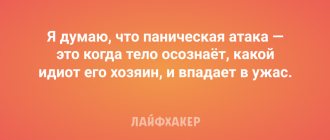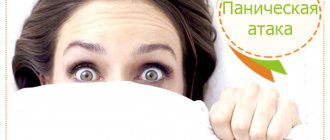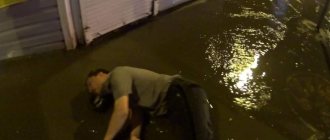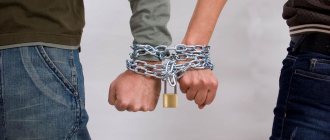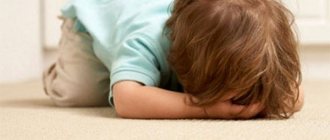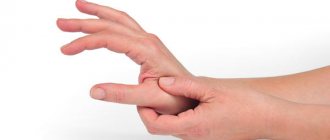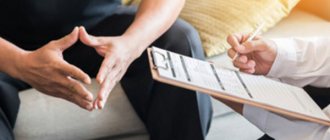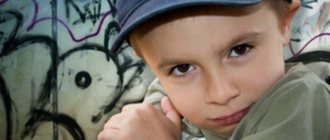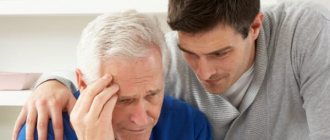The problem of vegetative-vascular dystonia, panic attacks, various neuroses and anxiety states is quite relevant these days. A sufficient number of blogs, sites, and communities are dedicated to it. Where people can discuss their feelings and share opinions on how to overcome the situation. But, despite the abundance of Internet sites and the activity of users, experts believe that it will never help to win panic attacks forum or a group on social networks. Rather, it will have the opposite effect rather than healing.
Constantly being on sites related to the topic, a person can immerse himself even more in his problem. And focus on your own feelings. After all, there is so much negativity here, but there are practically no positive notes! As a result, the problem will only get worse. Therefore, if you want to find treatment for panic attacks, you should leave the forum, group or other thematic community once and for all.
What kind of phenomenon?
What is a panic attack in children? This is a sudden attack of strong (deep, animal) causeless fear, intensely growing. The mental state is complemented by physical manifestations - the child has a rapid heartbeat, chest pain, he feels short of breath, a lump in the throat. A person may feel blurry and unrealistic about what is happening to him. On average, the condition lasts 10-30 minutes.
What is important to highlight is that panic attacks in children and adults are not an isolated manifestation. The person experiences the condition again and again. He develops phobias, he is afraid to relive this frightening feeling. The prolonged form (more than a year) is called panic attack syndrome.
The peak incidence occurs at the age of 25-35 years. Women are mainly affected by the condition. Panic attacks in children against this background are a rare occurrence. However, a child may well experience such attacks, starting from a conscious age (3-4 years).
Panic attacks themselves are not dangerous - no one has died from them. However, they can lead to stress, depression, suicide attempts, and addiction to medications. Often panic attacks were harbingers of stroke, bleeding, bronchial asthma, and thyrotoxicosis.
How to get rid of VSD and panic attacks
VSD - vegetative-vascular dystonia, a disorder in the functioning of the autonomic and nervous system.
As a result, headaches, migraines, panic attacks, insomnia, dizziness appear, blood pressure increases, pain of an unknown nature occurs, incl. in the abdomen, in the stomach, cramps in the intestines, pain in the stomach, weather dependence, pain and aches throughout the body, chills in the morning or during the day, slight fever for no reason, pain in the teeth, pain in the eyes, in the neck, lump in the throat etc.
A person undergoes 1000 examinations, but nothing is found. Doctors “kick” him from one specialist to another, but to no avail.
They tell you “You are faking” or “You are absolutely healthy”, but you feel like half a corpse.
You are prescribed a bunch of tranquilizers, nootropics, antidepressants, drugs to improve blood circulation in the brain, etc., but this either helps for a while or does not help at all.
And then you are so afraid of attacks that you are afraid to leave the house and close yourself within four walls.
Sound familiar?
Very familiar to many. As my friend says, VSD is the plague of the 21st century. When I was faced with this disease, I searched for answers for a long time, sometimes I gave up, but I didn’t give up, I moved forward.
My friend said: “When you get well and write about it. You know how many people you will help!”
I hope she is right and my experience really helps people.
Everyone suffers from panic attacks and VSD, even stars and successful people, so no matter how much money you have in your wallet, it will not help you recover, I have seen this from my own experience.
When an attack begins, you are afraid to die, you are shaking, you are suffocating and you become very scared.
VSD patients are often not accepted, they are laughed at, no one can understand their condition, even doctors sometimes laugh at such patients.
A girl wrote to me who was brought in by ambulance with a panic attack, she couldn’t breathe, she thought she was dying, she had a lump in her throat, but nothing was found. All the doctors who were on shift laughed at her.
People don’t understand why you get sick so often, they consider it a whim or an attraction for attention, your family and friends get tired and irritated from your eternal painful state, they may even reproach you for making it all up on purpose. Friends stop communicating with you, there’s no point in inviting you somewhere, you’re always sick, you often talk about your illness, it’s not interesting to be with you, they can tease you, judge you, etc.
But you’re just scared, you don’t see a way out, you don’t know what to do about it, who to run to, how to get rid of it and live normally. You don't see the light at the end of the tunnel, and life turns into torture.
I would really like for those suffering from VSD to see this light and get rid of this disease. I know how important this is for each of you, and I know the way out.
Psychosomatic causes of VSD
To defeat the enemy, you need to know him by sight.
Therefore, it is very important to find the psychosomatic causes of the disease.
The best technique that has helped me and helps me in individual work with people is the plasticine technique. With its help, we reveal even the most deeply hidden destructive programs. When done correctly, this exercise will show you the reasons for the appearance of these programs and what you need to work on for the disease to go away.
I can say from personal experience and experience of working with people who suffer from VSD and panic attacks that 99% is dislike for oneself, fear of judgment, lack of self-confidence, fear of making mistakes, self-rejection. There may also be “I shouldn’t live” or “I don’t have the right to live” programs, strong feelings of guilt and self-flagellation.
During attacks, people close themselves within four walls, protect themselves from the outside world, people, because they are tired.
A subconscious feeling of danger from the world, people, distrust of the world, God, the Universe, a feeling of one’s own worthlessness, inferiority and the expectation that you will be hurt.
Powerful subconscious programs of self-destruction can be launched when you have an “excellent student” complex and do not accept yourself as imperfect; you have excessive perfectionism, especially in relation to yourself.
You are always chasing, chasing, chasing yourself for some kind of ideality, but the finish line is never in sight. Everything is not enough for you and you are not good enough, then your body can no longer stand it and your body breaks down.
Fears, complexes, rejection, lack of internal support and self-confidence - all this can trigger VSD and bring you to hellish torment with panic attacks.
99% of VSD sufferers have problems with the spine, especially the neck, which indicates a lack of inner core, support, and faith in themselves and their happy life.
You don’t feel confident, you don’t stand firmly on your feet, you’re constantly scared, there are always problems in your head and worries.
And also, if you don’t accept yourself and don’t believe in yourself, then you become completely shriveled, you’re stooped, your head is down, you’re tense, as if you’re waiting for a blow. The eyes are downcast, it’s scary to straighten your shoulders, raise your head and stretch your neck. It’s scary to show yourself and attract attention, it’s scary to trust the world and people.
We need to work with this seriously! Learn to believe in yourself, love yourself, accept yourself.
I worked long and hard on this.
Everything I did to love myself and believe in myself, I give in the “Magic of the Game” marathons. Self Love,” “Believe in Yourself,” “Fairytale Life,” and “Love Yourself.”
Work with my fairy tales “Confession of the Body”, “Beauty Fairies”, “A Tale about Self-Love”, “A Tale about Believing in Oneself”.
Every fairy tale has techniques, do them.
VSD is a disease of people who do not see joy in life, which means they need to fill their lives with joy.
Even if you are afraid to leave the house right now, start looking for joy in your home.
We definitely dance every morning, and better yet, every evening. Let's turn on our favorite music and dance.
Dancing and singing helped me a lot. Every day I danced, jumped and sang: “I am the most beautiful, happiest and healthiest girl in the whole world. The whole world loves me, the whole world adores me. My body is the healthiest and most beautiful in the whole world.”
I spent 20-30 minutes a day on such dances with songs. I still sing often.
This helps to shake up the body and recharge with joy.
Be sure to move and exercise your spine closely.
Finding a good osteopath or back specialist will be an added bonus.
I do doctor Shishonin’s neck gymnastics, I highly recommend it to everyone!
I got rid of panic attacks myself; this gymnastics helped me get rid of weather dependence and headaches.
As I wrote earlier, it is very important to devalue your illness, to understand that you are powerful, and it is “zilch.” Talk more often:
I am power, I am the mistress, you are a disease - no one here! Get out of my body! I am the power!
We switch all our thoughts to our goals, new things, and keep ourselves busy with something.
You definitely need joyful emotions, distract yourself, make yourself happy, have holidays!
A person who has panic attacks constantly expects them and is afraid of them.
Realize for yourself that this is just your fear. Forget about these attacks, don't expect them.
An attack comes, say to yourself: “You are just fear, get out!” I’m healthy, get out of here.”
Mentally sweep the attack out of your body and system. You are strength! You are power!
Often people who suffer from VSD are people who want to be pitied. They are victims. This is also a manifestation of self-dislike and lack of self-confidence; I highly recommend reading the article about vampirism.
I recorded a broadcast for you about VSD, you can watch it below.
Hair loss due to VSD
On the air they asked a lot about hair, and then I remembered that VSD students lose a lot of hair, I remember how I collected mine in bunches throughout the apartment.
On air I showed how I work with a ball.
This ball massage perfectly helped me eliminate hair loss, it began to grow 5 times faster and became shiny.
Typically, panic attacks, headaches and hair loss are associated with poor blood circulation in the brain.
The psychosomatics of all this is that a person forgets about his individuality and follows the lead of other people, trying to meet their expectations.
Such a person is unhappy because he does not know who he really is.
It also cannot respond flexibly to changing conditions. Containing anger, aggression, feeling of strong pressure.
What to do? Remember that you are a unique person, learn to love yourself, believe in yourself, hear yourself! We do not serve to please others for the sake of praise; we remember that we can cultivate praise, attention, love and self-confidence ourselves.
Someone else's opinion doesn't mean anything, it's just someone else's opinion.
We learn to trust the Universe, angels, higher powers and accept all changes in life with gratitude.
Well, a massage with a ball will help improve blood circulation.
You will succeed! You will get well! Allow yourself this, do not feed your illness, do not nurture it and do not grow it. Show that you are the master in this situation, and your illness is just dust. Shake it off. All thoughts for health, dreams and a happy life!
Recording of Svetlana’s live broadcast on the topic “How to cure VSD”
Nature of the phenomenon
Panic attacks in a 7 year old child. Why does this happen? The scientific world has not yet given an exact answer to the question. There are many hypotheses and explanations:
- Increased production of catecholamines - adrenaline, norepinephrine, dopamine. These hormones are designed to mobilize the nervous system. They are developed in a state where you urgently need to run or fight. It is believed that excessive production of such highly activating hormones can manifest as a panic attack. By the way, with intravenous administration of adrenaline it will be a side effect.
- Genetic hypothesis. A very interesting statement: if an identical twin experiences anxiety and fear, then in 50% of cases this condition will overtake his brother or sister. Even if they are very far away. This is confirmed by 15-20% of twins surveyed.
- Psychoanalytic version. Z. Freud and his followers believed that panic attacks reveal a person with a deep intrapersonal conflict. A consequence of the suppression of states requiring emotional release. Not entirely suitable for explaining panic attacks in a 6 year old child.
- Cognitive hypothesis. The body misinterprets its sensations. For example, physical activity is perceived as a mortal threat. In response, it releases a powerful dose of adrenaline, which leads to a panic attack.
- Inner fears. Human phobias (fear of heights, insects, darkness) in the appropriate situation can result in such an attack. This is quite suitable for the cause of a panic attack in a 5 year old child.
What happens to the child?
During a panic attack, something like this happens in the human body:
- A sharp surge of adrenaline.
- The consequence is vasoconstriction, increased breathing and heart rate.
- Increased blood pressure.
- Rapid breathing increases the release of carbon dioxide, which further increases anxiety.
- Carbon dioxide changes the pH of the blood. This leads to dizziness and numbness of the limbs.
- Vasospasm slows down the delivery of oxygen to the tissues: lactic acid accumulates, increasing the manifestation of the attack.
Psychological causes of the condition
In most cases, panic attacks in children are caused by psychological reasons:
- Phobias.
- Depression.
- Accelerated pace of life.
- Constant stress.
- Post-traumatic disorder after an accident, surgery, morally difficult event, etc.
- Early onset of sexual activity.
- Obsessive-compulsive disorder is a constant fear of dangerous and unpleasant situations.
- Schizophrenia, schizotypal personality disorders.
Panic attacks can also be triggered by medications - glucocorticoids, anabolic steroids, etc.
Causes of panic attacks in children
Panic disorder develops as a result of the interaction of biological, psychological, and social factors. Biological causes of the disease include:
- Nervous system lesions.
Attacks are provoked by disturbances of autonomic regulation, pre- and postnatal injuries, and neurological infections. - Hormonal imbalance.
Puberty, the onset of sexual activity, and menstruation are periods of increased risk of developing the disease. - Intoxication.
Alcohol abuse, drug addiction, and drug poisoning increase the likelihood of the disease. - Hereditary burden.
There is a genetic basis for panic attacks: the incidence of first-degree relatives is 15-17%.
The psychological causes of panic disorder are certain characterological features. The following features predispose to the development of the disease:
- Demonstrativeness.
The basis is a thirst for attention, recognition from others, the desire to show oneself from the best side, to be in the center of attention. - Hypochondriacity.
Constant attention to one’s own well-being, increased tension, and nervousness when health deteriorates provoke panic attacks of a similar nature. - Anxious suspiciousness.
Children are highly suggestible and impressionable. Anxiety becomes the basis for the development of panic disorder.
Social factors include a dysfunctional family environment: parental alcoholism, conflicts, violence, emotional coldness (deprivation of the need for close relationships), difficult material and living conditions. The common pathological basis of these situations is fear, uncertainty, and the need to protect oneself.
At-risk groups
It is also important to identify categories of children who are more susceptible to this disorder than others. The leading factors will be:
- Inactive lifestyle. The child’s body constantly requires emotional release - sports, noisy games, communication with peers. If this is not the case, then the emotions come out through a panic attack.
- Closedness, keeping feelings and emotions inside oneself.
- Lack of proper sleep. Lack of sleep leads to increased production of adrenaline and other hormones that trigger a panic attack.
Possible complications
If the problem is not dealt with in time, it will lead to the development of phobic neurosis, and the patient’s fears will intensify. Additionally, mental disorders develop.
Panic attacks can provoke the following complications:
- frequent fainting, which can cause injury to the patient;
- worsening symptoms of VSD;
- aggravate the feeling of depression and loneliness, depression may develop.
If the illness lasts for a long time, the victim begins to withdraw into himself, and his anxious state intensifies. Over time, the patient becomes socially maladjusted. He cannot communicate normally with others, becomes unsure of himself, his performance at school worsens, and apathy and indifference to the world around him often set in.
Mental manifestations
Let us denote the psychological symptoms of panic attacks in children:
- Fear of death. It can transform into a fear of getting sick, suffocating, falling from a height, etc.
- A feeling of impending disaster.
- Fear of going crazy, losing your mind.
- Constant feeling of a non-existent lump in the throat.
- Derealization of reality: slow motion effect, distortion of sounds and visual images. It seems to a person that the real world fades into the background.
- Depersonalization. It seems to the child that he sees his body from the outside and cannot control himself.
- Lightheadedness, lightheadedness, feeling that you will soon lose consciousness.
What to do in childhood
Psychologists consider creativity to be a good way to transform emotions. It allows you to free yourself from experiences, giving them a different form (music, poetry, prose, paintings). If a teenager does not find ways to release his emotions, they destroy him from exhaustion. Against this background, conflicts arise with parents, teachers, friends and loved ones. It is difficult for a teenager to figure out who supports him and who is trying to harm him. Often he compensates for disharmony with alcohol and drugs.
Girls have panic attacks much more often than boys. This is explained by the fact that the female sex is naturally more sensitive and emotional. You shouldn’t take this as a lady’s whims. If a girl has become nervous, whiny, her mood and desires often change - this is an alarming signal for both the parents and the teenager himself.
The prognosis for treatment of such conditions is good. It is possible to get rid of them without resorting to medications. Sometimes a few conversations with a psychologist or psychotherapist are enough.
However, a favorable outcome is possible only if there is a trusting relationship between parents and child. After all, an unhealthy family environment is the first factor in the development of neuroses and other mental disorders in adolescents. If parents do not pay due attention to the child, do not strive to understand and hear him, he finds solace in dubious companies and subcultures.
Psychotherapist of the highest category, Candidate of Medical Sciences: Galushchak Alexander Vasilievich on the causes of panic attacks in children and adolescents and methods of treatment in the video:
Read more: Oedipus complex or Mom, I want to marry you
Physiological manifestations
The onset of a panic attack in a child can be recognized by the following signs:
- Hot or cold flashes.
- Cardiopalmus.
- Increased breathing.
- Increased sweating.
- Dry mouth.
- Pain in the left side of the chest.
- Diarrhea or, on the contrary, constipation.
- Cold hands and feet.
- Nausea.
- Vomit.
- Unpleasant sensations in the upper abdomen.
- Chills and trembling.
- Weakness.
- Dizziness.
Diagnostics
Often, the diagnosis of panic attacks begins with a visit to a pediatrician or pediatric neurologist, but between attacks no abnormalities in the nervous system or internal organs are detected. The results of laboratory and instrumental studies are normal. Specific diagnosis of the disorder involves:
- Psychiatrist.
The specialist conducts a survey of the patient and parents: he clarifies when the attacks first appeared, what their frequency is, whether there are factors that provoke panic, and whether close relatives suffer from panic disorder. When making a diagnosis, neurological examination data are taken into account. To obtain additional information about the emotional and personal sphere, the doctor may refer the patient for a psychological examination. - Medical psychologist.
Psychodiagnostics is carried out to identify emotional and personal prerequisites for the formation of panic attacks in a child. The level of tension, the tendency to phobias, fears, the presence of demonstrative, hypochondriacal, anxious and suspicious character traits are determined. Preschoolers and primary schoolchildren are examined using projective methods, teenagers – using questionnaires.
Panic attacks in pediatric patients must be differentiated from diseases of the cardiovascular, respiratory, nervous, endocrine systems, as well as from the effects of the use of stimulant drugs. For this purpose, the patient is referred to the appropriate specialists (to exclude somatic pathology).
Symptoms between panic attacks
Panic attack syndrome can also be detected during quiet periods:
- The child is in an anxious state and anticipates a recurrence of the attack.
- Fear of the situation or location in which the previous attack occurred.
- Social maladaptation - a person is afraid to be alone, to travel in public transport unaccompanied, etc.
- Obvious manifestation of phobias: fear of open space, death, madness, darkness, etc.
- The so-called asthenodepressive syndrome: poor sleep, weakness, fatigue, tearfulness, bad mood, deterioration of attention.
- Depression.
- Hysterical disorders.
- Unpleasant obsessive thoughts, anxiety.
- Fussiness.
Treatment of panic attacks in children
Treatment of panic disorder has two directions: stopping attacks and preventing their further development. The complex of therapeutic measures includes:
- Drug treatment.
The drugs are selected by a child psychiatrist taking into account the child’s age, frequency, and severity of attacks. Tricyclic and tetracyclic antidepressants, selective serotonergic drugs, MAO inhibitors, and benzodiazepines are prescribed. Tricyclic antidepressants are indicated for phobic symptoms, depression, and anticipatory anxiety. The disadvantage of these drugs is their long latent period. Selective serotonin reuptake inhibitors are most often used to treat children due to the low likelihood of side effects, safe long-term use, and elimination of anxiety without a sedative component. Benzodiazepines are prescribed for a quick therapeutic effect, but they are less safe and do not relieve agoraphobia. - Psychotherapy.
Cognitive-behavioral methods, breathing exercises, and auto-training are used. The child learns to manage emotions and analyze situations that provoke panic attacks. Through breathing techniques it controls vegetative changes in the body. Masters the skills of relaxation and anxiety reduction.
How to relieve the condition yourself?
The child has panic attacks. What to do? First of all, teach him to cope with the condition on his own - in case you are not around:
- Repeat to yourself that this condition is not dangerous, that it will pass soon.
- Breathe with your stomach, concentrate on your breathing. Make sure that the exhalation is longer than the inhalation.
- Massage your thumbs, little fingers, ears, concentrating on your own sensations.
- Take a contrast shower: 20-30 seconds - warm water, the same amount - cold.
- Distract yourself with something: the view from the window, a movie, music.
- “Be angry” about the attack.
How to help a child with a panic attack? We recommend the following:
- Do not leave him alone during an attack. Reassure with a calm and quiet speech: “Everything is fine, hold on, it will pass soon.”
- Breathe deeply with your child, inviting him to repeat the inhalations and exhalations after himself.
- Massage your neck, shoulders, back.
- Help me take a contrast shower.
- Prepare tea from chamomile, mint, lemon balm, linden.
- Turn on music, a movie, an audiobook that can calm your child.
- Sing a song together, start counting cars, solving math problems, reciting rhymes - you need to distract the child from this state.
- Gently tingle, pinch it.
- Dilute 10 drops of peony tincture/valocordin/valerian tincture/motherwort tincture in a glass of water and offer it to your child.
Therapy
Treatment of panic attacks in children should only be prescribed by a qualified specialist. An important component is drug therapy:
- Tricyclic antidepressants.
- Tranquilizers.
- Antidepressant inhibitors based on serotonin reuptake.
- Nootropic drugs.
It is important to note that such serious drugs that directly affect a person’s psyche and consciousness can only be prescribed by the attending physician! Self-medication in this case is detrimental to the child’s psyche. The specialist selects the most suitable drug for the patient and his individual condition, prescribes a specific dosage, frequency of administration and duration of treatment.
Psychotherapeutic methods are also widely used:
- Body-oriented psychotherapy.
- Psychoanalysis.
- Hypnosis: Ericksonian and classical.
- Gestalt therapy.
- Neurolinguistic programming.
- Family systemic psychotherapy.
- Desensitization, etc.
Physiotherapeutic methods are also used. In particular, electrophoresis with magnesium sulfate, bromelectroson.
Classification
Panic attacks in childhood can vary significantly in symptoms. According to the extent of manifestations associated with panic, in pediatrics there are:
- Large, widespread attacks.
At least 4 symptoms are present. The frequency of attacks is one per week/month. - Minor attacks.
Having less than 4 symptoms. Occurs several times a day.
Another classification is based on the severity of certain symptoms of an attack. There are vegetative, hyperventilation, phobic, conversion, senestopathic, affective (depressive-dysphoric) panic attacks.
Preventive measures
To free your child from new attacks, you need to engage in complete prevention of the condition:
- Learn relaxing breathing exercises. It is also important to simply develop the habit of coping with stress using “deep breath - deep exhale.”
- Learn the simplest meditation exercises, select a collection of music for meditation.
- Engage your child in active sports - dancing, roller skating, skating, wrestling, etc.
- Turn to activities that increase stress resistance: watching humorous programs and good cartoons, a new hobby, doing art - drawing, embroidery, modeling, etc.
- Keep a personal diary to reflect personal achievements.
- Strictly control your sleep/wake schedule.
- Create the correct diet for your child. Pay special attention to the content of foods rich in vitamin C, calcium, zinc and magnesium.
- Practice herbal medicine - decoctions of motherwort, linden, hop cones, valerian root, chamomile flowers.
You are now familiar with the symptoms and treatment of panic attacks in children. Although the nature of this condition is not yet reliably known to scientists, the medical world has developed clear recommendations for self-help, treatment and prevention measures to help cope with attacks.
Ordinary hysteria or a serious disorder of the nervous system? It is difficult for parents on their own to figure out the reasons for the appearance of screaming, tears or sudden panic for no reason. This means a consultation with a pediatric neurologist is required.
Why does a panic attack occur in teenagers?
Attacks of unreasonable anxiety occur in children of any age. Panic attack is a dysfunction of the autonomic nervous system caused by vegetative-vascular dystonia. There is a malfunction in the functioning of the sympathetic and parasympathetic departments.
The trigger for panic attacks are external factors:
- severe stress (moving to a new city, transferring to another school, parental divorce);
- unfavorable psychological microclimate in the family (fights, alcoholism or drug addiction of close relatives);
- parental overprotection;
- material difficulties (adults talking about debts, mortgages, loans);
- lack of shared recreation with parents.
It is impossible to avoid these events. They act as stressors (stress triggers). Normally, the sympathetic and parasympathetic divisions of the autonomic nervous system “digest” negative emotions. The body's compensatory mechanisms help the cardiovascular, respiratory and other systems to mobilize during difficult periods.
But internal factors are also added here. PA attacks (panic attacks) become more frequent when:
- Hormonal changes (puberty).
- Traumatic brain injuries.
- Asphyxia during pregnancy.
- Hereditary predisposition.
Therefore, no child is immune from developing the disorder. At a certain point, the body’s compensatory forces cease to cope, and damage to the nervous tissue occurs.
How do panic attacks manifest in children and adolescents?
A case from the practice of the center’s neurologists: “The mother of a five-year-old child came to us. Since infancy, the child suffered from attacks of headaches. The girl grabbed her head and screamed loudly. When I learned to speak, during attacks I repeated: my head hurts, I’m scared. I had problems sleeping and nightmares. The child trembled when falling asleep, froze in the warmth, and wrapped himself in blankets.
One day, during an attack, chills began. The ambulance doctors measured the blood pressure at 130/100, which is extremely high for a preschool child. With age, the attacks became more frequent and lasted 40 minutes. These included weakness, lack of body weight, pain in the arms and legs without visible injuries. Several courses of therapy at the Clinical Center for Autonomic Neurology eliminated the attacks and normalized the appetite. The child went to kindergarten, then to school. PA did not return"
In children, a panic attack is accompanied by:
- shallow breathing;
- dizziness;
- we cry;
- increased sweating;
- nausea and vomiting;
- shortness of breath;
- headache;
- cramps in the stomach;
- tremor of the limbs.
What to do if panic attacks occur at night?
A panic attack can happen at any time of the day. The main thing is that there is an adult with the child who will provide first aid without worry. An algorithm of actions recommended by pediatric neurologists will help with this.
How to calm a child during a panic attack?
- Hug your teenager and turn on a dim light.
- Teach to breathe deeply. During a panic attack, the child takes shallow, rapid breaths. Advise your child to inhale slowly and deeply, hold the breath for 3 seconds and exhale just as slowly through the mouth. Repeat the exercise 5 times. Actively engage your stomach as you inhale and exhale.
- Remove tension. During an attack, the teenager feels numbness in the body. It seems to him that he does not control his wooden limbs or chest. Ask your child to lie on the bed, curl up in a ball, pressing his legs, bent at the knees, tightly to his stomach. The position reflexively relaxes the skeletal muscles, the child will feel better.
Is it possible to die from a panic attack?
Shortness of breath, chest pain, dizziness frightens the child and his parents. During an attack, adults fear that the preschooler or teenager will die. This is wrong. Excess adrenaline in the blood and high blood pressure harm the body, but do not kill the child during a panic attack.
Nevertheless, this disorder of the autonomic system is dangerous. The child begins to fear an attack long before it begins. He avoids new groups, crowds of people, active games and entertainment in every possible way. Gradually, the teenager is overcome by depressive thoughts of insanity and suicide.
Parents should not turn a blind eye to attacks of unreasonable fear or scold for emotionality or hysteria. Just sign your child up for a consultation at the Clinical Center for Autonomic Neurology.
Which doctor should I contact?
Due to the simultaneous presence of somatic and mental disorders, it is difficult for parents to choose a specialist to treat a teenager. If you suspect a panic attack, doctors at the Clinical Center for Autonomic Neurology advise you to undergo diagnostics in the clinic.
“The variety of symptoms in PA baffles doctors. Many years of experience, the use of foreign research and the modern technical base of the center make it possible not only to identify the cause (autonomic dysfunction), but also to solve the problem using physiotherapeutic methods. No heavy drugs. No harm to the psyche. Without consequences for the kidneys, heart and liver. Effective and permanent for a child of any age.”
A.I. Belenko, Head of the Clinical Center for Autonomic Neurology, Candidate of Medical Sciences.
How to diagnose panic disorder in children?
To determine foci of autoimmune inflammation of the ganglia, disturbances in the functioning of the parasympathetic and sympathetic departments at the Clinical Center for Autonomic Neurology, the following is used:
- Computer thermography. The autonomic nervous system is responsible for thermoregulation. A thermal imager takes pictures of the body or part of it. The camera detects spasmodic areas, circulatory and lymph flow disorders, and areas of increased tension.
- Cardiorhythmography. A cardiogram is taken at rest, with little physical activity, and during the recovery period. Diagnostics informs about 86 indicators of the functioning of the cardiovascular, respiratory, and nervous systems.
In 1.5-2 hours, neurologists get a complete picture of the functioning of the nervous system and the localization of foci of inflammation. The methods are painless and do not have a negative effect on the body.
Can panic attacks in adolescence be completely cured?
The clinic’s neurologists are confident that autoimmune inflammation of the vegetative nodes can be eliminated once and for all. Diagnostics shows foci of inflammation. Next, the Clinical Center for Autonomic Neurology draws up an individual treatment program for the child. Using physiotherapy and non-medicinal methods, doctors restore innervation, regenerate nervous tissue and improve metabolic processes and the functioning of internal organs.
Unlike classical methods of treating PA, the Clinical Center for Autonomic Neurology does not use hypnosis, tranquilizers or antidepressants. No one influences the child’s psyche with chemicals. Therefore, therapy for panic attacks in children has no age restrictions or contraindications.
Depending on the number of foci of autoimmune inflammation, the patient’s age and the duration of the disorder, 1 or several courses are prescribed at 6-month intervals.
What methods of prevention exist?
Pediatric neurologists recommend during the period of active growth of a child:
- stick to the daily schedule. Sleep - at least 9 hours. During sleep, the nervous system is restored, the body compensates for the effects of stress;
- exclude tonic substances from the diet: coffee, tea, cola and Pepsi, energy drinks;
- exercise. Cardio exercises have a beneficial effect on the nervous system: running, swimming, cycling. If possible, send a child with increased excitability to special children's yoga.
A panic attack is not a death sentence for a teenager. Modern non-drug methods restore the nervous system, eliminate somatic disorders and return the child to normal life in society.

